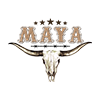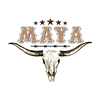Automate Apparel Fulfillment with DTF Transfers: UV DTF, Dropshipping & Blank T‑Shirts, Hoodies & Hats for Scalable Custom Apparel
Launching and scaling a custom apparel business in 2025 means balancing design, fulfillment speed, margins, and customer experience. Direct-to-film (DTF) transfers — and the newer UV DTF processes — combined with dropshipping and a smart selection of blank t-shirts, hoodies, and hats let you automate fulfillment, reduce inventory risk, and scale faster. This guide breaks down the why, how, and practical steps to implement automated fulfillment using DTF, plus how MAYA TX services (same-day pickup in Austin, nationwide shipping, dropshipping fulfillment, and a wide blank catalog) can help you scale.
Meta description
- Automate apparel fulfillment with UV DTF transfers, dropshipping, and blank tees, hoodies & hats. Scale custom apparel with MAYA TX same-day pickup & nationwide shipping.
Why DTF transfers are a game-changer for automation
DTF transfers are printed designs on a clear PET film that are coated with adhesive powder and heat-pressed onto garments. They offer vibrant full-color printing, photographic detail capability, and broad substrate compatibility (cotton, blends, performance fabrics, and some synthetics). For entrepreneurs and small brands, DTF transfers enable automation because:
- You can separate printing from pressing: print transfers in bulk and press later or at a partner site near the customer.
- They reduce SKU complexity: store fewer pre-printed garments and more blank apparel or transfers.
- They fit dropshipping models: fulfillment partners can print, press, and ship on demand from distributed locations.
What is UV DTF and when to use it?
UV DTF uses UV-curable inks and a UV curing step for the printed film, producing highly durable transfers with improved wash performance and color stability. UV DTF shines when you need:
- Top-tier color longevity and resistance to fading.
- Sharper detail on gradients and photographic imagery.
- Fast curing workflows that reduce bottlenecks in high-volume environments.
UV DTF is becoming a preferred option for sellers who want premium print longevity without the setup costs and limitations of screen printing.
DTF vs. screen printing vs. embroidery: in-depth comparison
Choose your decoration method based on order size, design complexity, turnaround need, and unit economics.
- DTF Transfers: Low setup cost, great for small-to-medium runs, full-color/photographic prints, and mixed-material applications. Flexible for frequent design changes and multiple SKUs.
- UV DTF: An enhanced DTF option for longer-lasting prints and faster curing; good for premium lines and activewear.
- Screen Printing: Cost-effective at high volume per design, excellent opacity on darks, but expensive setup for many designs and color separations.
- Embroidery: High-perceived value for hats, polos, and premium pieces. Longer run-times and higher per-unit costs; not suitable for photographic prints.
Hybrid approaches—DTF for detailed graphics and embroidery for logos/accents—are increasingly common for brands aiming to balance cost and perceived value.
How automated dropshipping with DTF works (detailed workflow)
Here’s a step-by-step workflow that many Shopify/Etsy sellers follow when automating fulfillment with a DTF-enabled dropshipper like MAYA TX:
- Customer places an order on your Shopify or Etsy store.
- Your store routes the order to your dropshipping/fulfillment partner via an integration (app, API, or email + CSV).
- The partner prints the DTF transfer or prints & presses onto the selected blank garment.
- The item is QC checked, packed, and shipped directly to the customer with tracking.
- Tracking and order status are pushed back to your store automatically; you handle customer-facing communication while the partner handles production and logistics.
For added speed, some sellers print transfers in bulk and ship transfers or unpressed garments to local heat-press partners for same-day local fulfillment.
Choosing blanks: t-shirts, hoodies & hats that convert
Your blank apparel selection affects conversion, returns, and brand perception. Build a tiered catalog that targets budget, mid-range, and premium buyers.
- Blank T‑Shirts: Core offerings should include classic 100% cotton soft-hand tees, tri-blends (for a premium soft feel), and polyester performance tees for activewear. Consider size/fit diversity—unisex, women’s cuts, and extended sizes.
- Hoodies: Offer midweight (9–11 oz) fleece for everyday wear and heavyweight for premium or cold-weather launches. Zip vs pullover options help capture different buyers.
- Hats: Structured caps with front panels take DTF and patches well, while beanies pair better with embroidered patches or woven tags.
MAYA TX’s blank catalog covers many standard and fashion-forward blanks; review the Blank Apparel collection to match your brand’s fit and margin strategy.
Integrations and technical setup (Shopify/Etsy specifics)
Smooth automation requires reliable store integrations and clear SKU mapping. Key steps:
- Install the fulfillment app: Use a dedicated app or API provided by your fulfillment partner. Many partners offer Shopify apps or webhooks to accept orders automatically.
- Map SKUs and print specs: Ensure each product maps to the correct blank and transfer SKU. Attach print instructions (placement, size, and color variants) to each SKU.
- Set shipping rules: Configure service levels, shipping zones, and rates that reflect real fulfillment times and costs from your partner.
- Enable order routing: For multi-location fulfillment, set rules to route orders to the nearest facility to reduce shipping time and cost.
For general e-commerce automation strategies read the Shopify Blog, and for POD operations see how industry leaders like Printful structure their workflows.
Prepress and file preparation: practical specs
Providing print-ready files reduces back-and-forth and speeds production. Recommended specs for DTF/UV DTF:
- File types: PNG with transparency for photographic/complex prints; vector (EPS/AI/PDF) for logos and text-based designs.
- Resolution: 300 DPI at final print size.
- Color: Ask your provider for ICC or RIP profiles. If unknown, deliver in sRGB and request a soft-proof.
- Text: Convert fonts to outlines/curves to avoid missing font issues.
- Bleed & safety: Include 0.125–0.25" bleed for edge graphics and keep important elements 0.25–0.5" inside the artboard.
Maintain a folder with standardized templates for each SKU and placement to streamline uploads.
Cost modeling and pricing examples
Unit economics vary by blank choice, print method, and shipping. Example estimates (illustrative only):
- Blank tee: $3–$8
- DTF transfer (small): $1.50–$4
- Press and fulfillment: $2–$6
- Shipping: $3–$8
Pricing formula example:
- Cost per item = blank + transfer/printing + fulfillment + shipping
- Retail price = cost per item × 2.5–3.5 (depending on brand positioning and marketing spend)
For a $6 blank + $3 transfer + $4 fulfillment + $5 shipping = $18 cost, retail at 2.5× = $45. Test pricing elasticity with promotions and bundles to improve average order value (AOV).
Quality control, returns, and customer experience
Automation only works if quality and customer experience are maintained. Best practices:
- Implement a QC checklist: adhesion, color accuracy, alignment, and packaging integrity.
- Run wash tests on batches or new materials—DTF and UV DTF should pass multiple wash cycles when cured properly.
- Maintain transparent shipping windows and tracking to set customer expectations.
- Offer clear return/replacement policies for production defects to reduce disputes and protect your reputation.
Common production issues and troubleshooting
Typical problems and quick remedies:
- Peeling or edge lift: Ensure correct adhesive powder amount and proper curing/press temperature and dwell time.
- Fading or poor wash performance: Check ink curing and advise customers on cold-wash, inside-out drying for extended life.
- Color mismatch: Use RIP profiles and request a test print; avoid low-resolution images.
Marketing & SEO strategies to grow sales in 2025
Drive organic and paid traffic with these tactics:
- SEO-optimized product pages: Include keywords like "DTF transfers," "UV DTF," "custom apparel," "blank t-shirts," "hoodies," "hats," "embroidery," "print-on-demand," and "dropshipping." Use long-tail phrases like "custom UV DTF printed hoodies" for niche traction.
- Content marketing: Publish long-form content (how-tos, care guides, trend reports) and use your blog to answer buyer intent queries. Link to product collection pages and fulfillment resources.
- Social proof and UGC: Encourage customers to post images with hashtags; display reviews prominently and use video unboxings to show quality.
- Paid acquisition: Test Facebook/Instagram ads with lifestyle creatives and retarget cart abandoners with dynamic ads.
For POD-specific marketing case studies and growth tactics, check industry resources like Oberlo and Printful.
Realistic growth timeline and scaling roadmap
Example scaling roadmap for a small brand:
- Month 0–2: Validate 10–20 designs with print-on-demand; focus on best-sellers and collect feedback.
- Month 3–6: Introduce bulk-printed transfers for top 10 designs and enable faster fulfillment via a dropshipper.
- Month 6–12: Expand blanks selection, add premium hoodie/embroidered hat lines, automate Shopify integrations and multi-location fulfillment.
- Month 12+: Optimize margin via negotiated supplier pricing, run seasonal capsule collections, and scale paid acquisition with proven creatives.
Case study (example scenario)
Example: A small Austin-based brand tested 25 designs on Etsy using POD. By switching top 8 designs to bulk DTF transfers and partnering with MAYA TX for dropshipping, they reduced average fulfillment time from 7–10 days to 2–4 days and increased repeat purchase rate by 18% due to faster delivery and improved print quality. This hypothetical scenario demonstrates how automation and a local fulfillment partner can materially impact conversion and repeat business.
Why choose MAYA TX for automated DTF fulfillment
MAYA TX combines production capabilities with fulfillment services tailored for sellers:
- Same-day pickup in Austin — Ideal for local wholesale, events, and rush orders.
- Nationwide shipping — Fast, tracked shipping across the U.S. to meet customer expectations.
- Dropshipping fulfillment — Print and ship directly to your customers; integrations to accept orders automatically and return tracking to your store.
- Wide blank selection — A curated catalog of tees, hoodies, and hats to match different price points and use cases.
Learn more and get started at the DTF Transfers page: https://txmaya.com/dtf-transfers and explore UV DTF and blanks: UV DTF | Blank Apparel.
Frequently asked questions (extended)
- How long does a DTF transfer last? — With correct curing and pressing, DTF transfers can last dozens of washes. UV DTF increases fade resistance and durability.
- Can I sell transfers without pressing garments? — Yes. Many resellers buy transfers to press locally or to offer as part of a reseller program.
- Do hats work with DTF? — Flat front panels and some structured caps take DTF well; embroidery remains the premium option for textured or rounded surfaces.
- What volume is right for screen printing vs DTF? — Screen printing typically becomes cost-effective above higher per-design volumes (hundreds per design). DTF is ideal for low-to-medium volumes and many SKUs.
Action plan checklist to implement automation
- Decide on fulfillment model: POD, stock transfers, or finished inventory.
- Create print-ready templates for each product and placement.
- Set up or verify Shopify/Etsy integration with your fulfillment partner and map SKUs.
- Order blanks and run sample prints/wash tests (50–100 units per SKU recommended for a representative sample).
- Enable multi-location routing if you want to shorten delivery times.
- Launch with a marketing push and track KPIs: AOV, conversion rate, fulfillment time, and return rate.
Final thoughts & call-to-action
Automating apparel fulfillment with DTF transfers and dropshipping unlocks speed, flexibility, and the ability to test designs without heavy inventory risk. Whether you're starting a side hustle, growing an Etsy or Shopify store, or scaling a specialty apparel brand, combining UV DTF quality, smart blank selection, and a dependable partner like MAYA TX makes scaling feasible and profitable.
Ready to automate? Explore MAYA TX services and start your fulfillment setup today: DTF Transfers | UV DTF | Blank Apparel. For broader POD and e-commerce strategy resources, visit Printful, the Shopify Blog, and Oberlo.
Want a tailored plan? Reply with your sales channel, average monthly orders, and top 5 SKUs and we’ll recommend a fulfillment workflow, sample schedule, and a basic cost model to get you started.


















